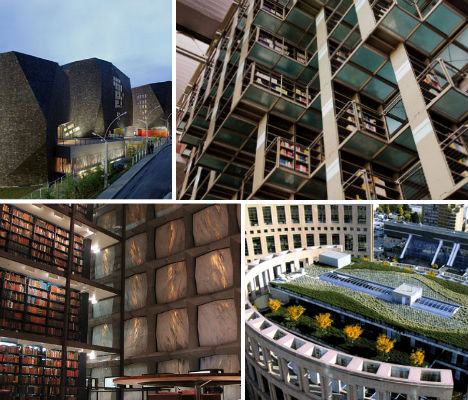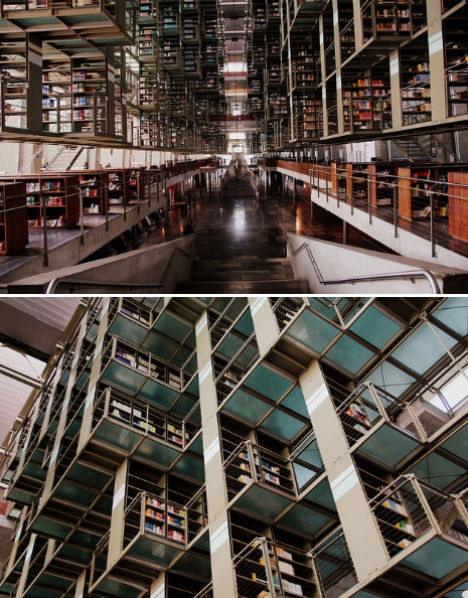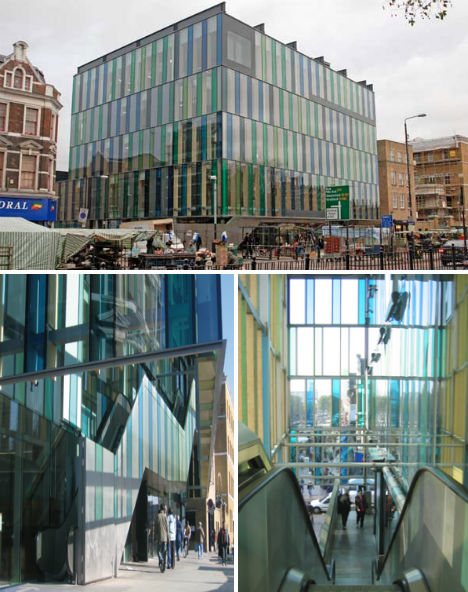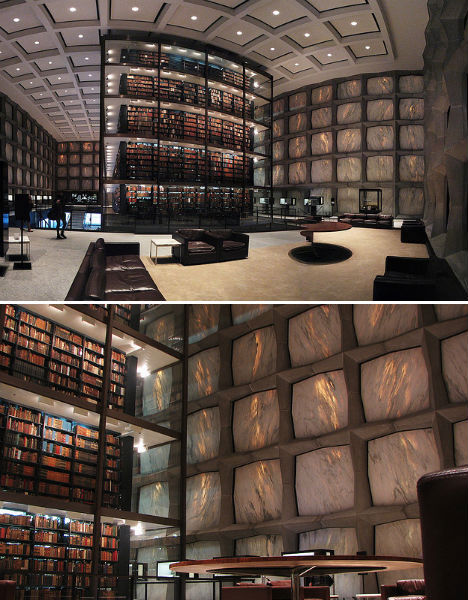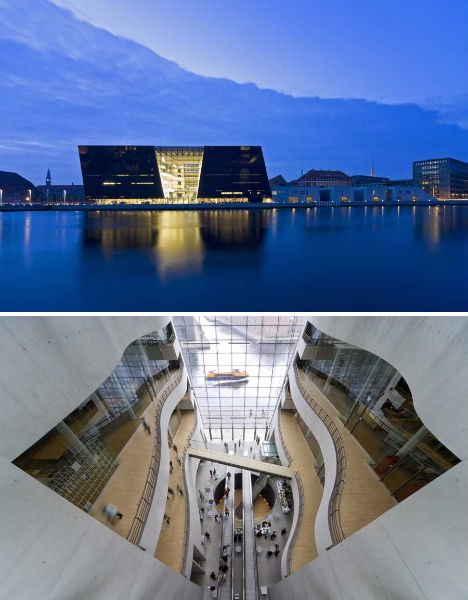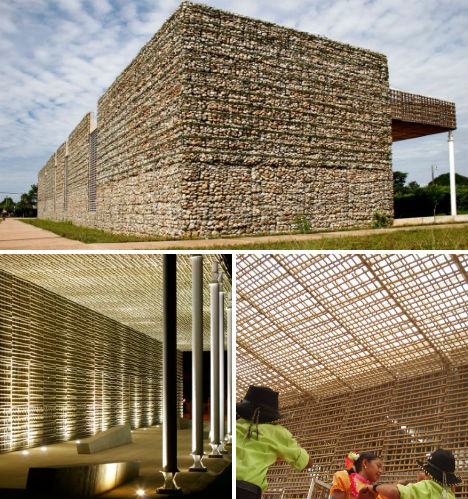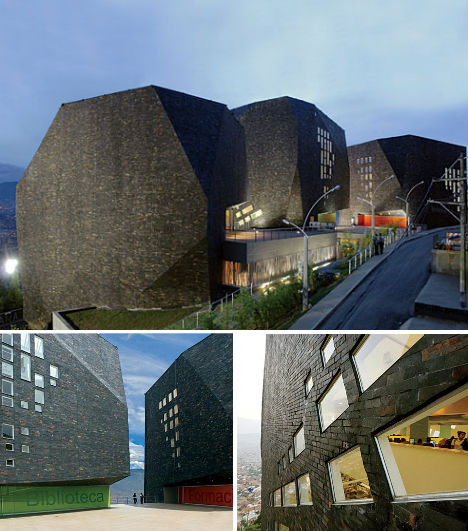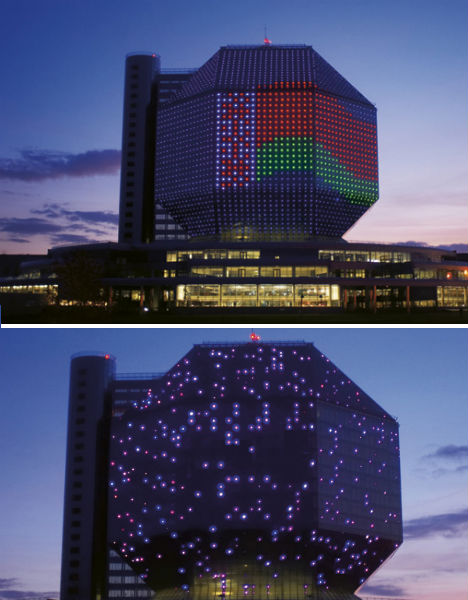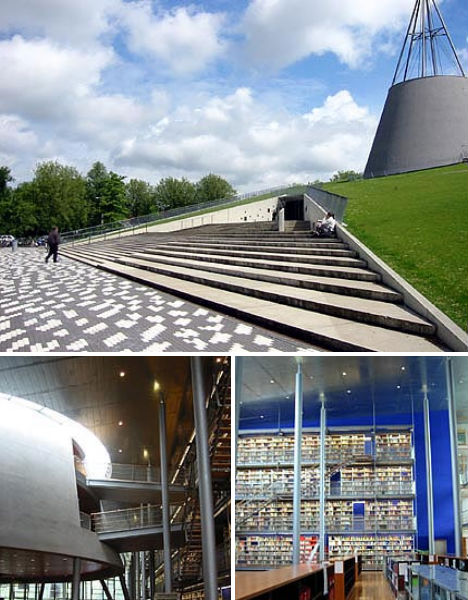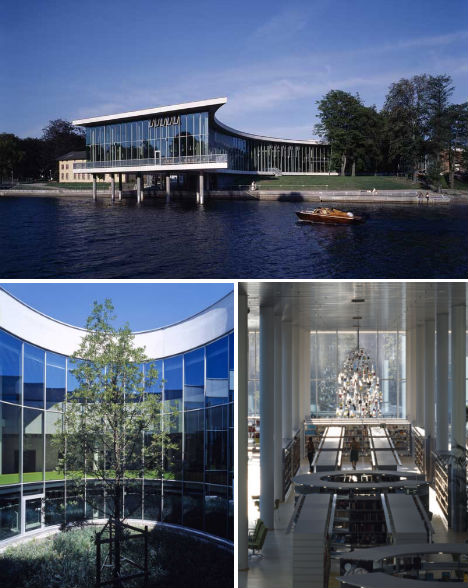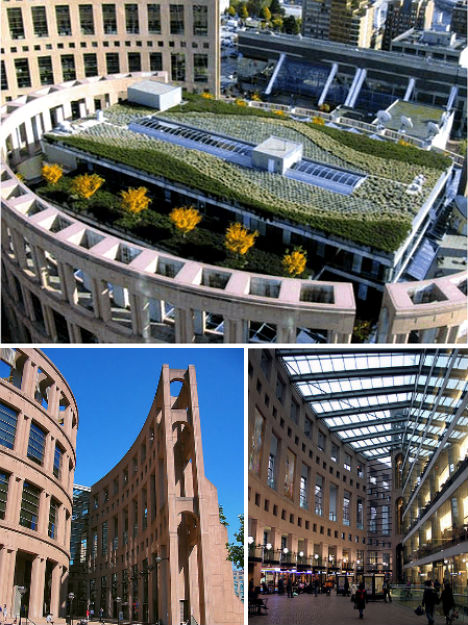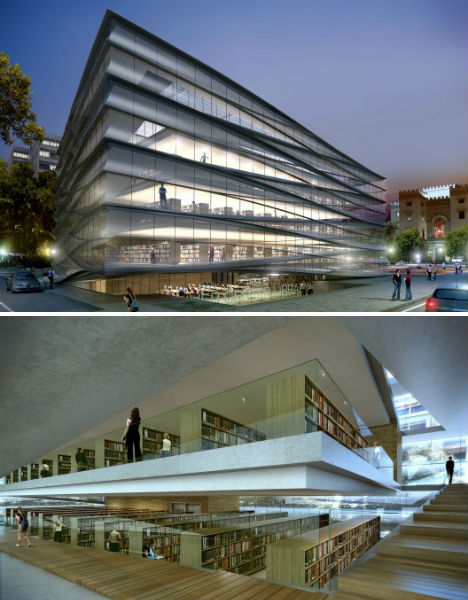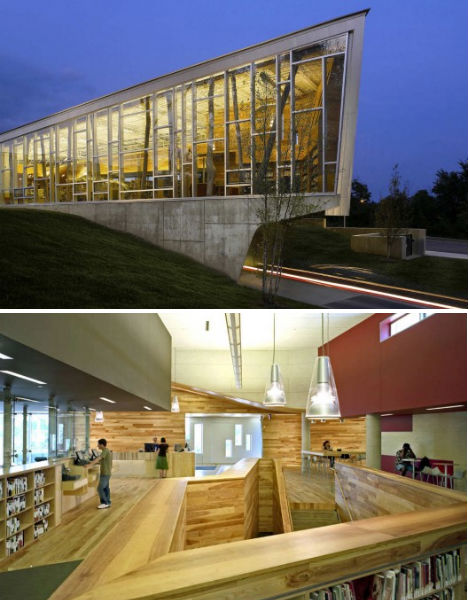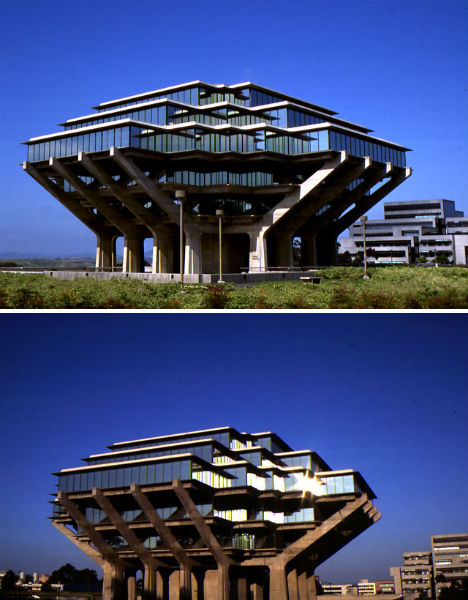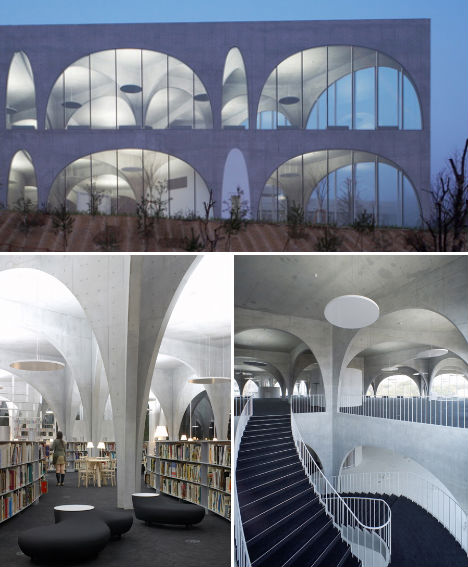The jaw-dropping intricacy of the libraries of old, with their leaded glass windows and tiers of dark wood shelves, is being replaced in favor of clean lines, open spaces and a focus on new technology in library architecture of the late 20th century and beyond. These 14 (more!) modern libraries are just as beautiful, boasting dramatic shapes and volumes, high ceilings, transparent walls and, of course, impressive stacks of books.
Jose Vasconcelos Library, Mexico City
(images via: lwy)
Dedicated to Jose Vasconcelos, a philosopher and former president of the National LIbrary of Mexico, this 409,000-square-foot library was built in 2005 and 2006 for $98 million, but had to be closed for 22 months due to construction defects. Row after row of gleaming steel form abstracted geometric patterns and impress upon visitors just how many books are contained within the shelves.
Idea Store Whitechapel, London, UK
(images via: architizer, archrecord)
A traditional library is combined with space for classes inside a diaphanous blue and green glass volume in Adjaye Associates’ Idea Store Whitechapel. The flagship building of a program that aims to push libraries into the 21st century, including the latest digital technology, Idea Store includes a five-story atrium.
Yale University Beinecke Rare Book & Manuscript Library
(images via: lauren manning)
Yale’s Beinecke Rare Book & Manuscript Library is housed in an unusual modern structure built in 1963; it’s the largest building in the world reserved just for the preservation of rare writings. Inside, the books are stacked six stories high. The walls are made of translucent marble to let in minimal light, a tactic that preserves the delicate books and papers.
Black Diamond at the Royal Library Copenhagen, Denmark
(images via: e-architect.co.uk)
SHL Architects gave Copenhagen an incredible new landmark with the Black Diamond extension to the historic Royal Danish Library. This monolithic design is surprisingly airy and open on the inside, encouraging not just the study of books but also the exploration of new types of media. “We are drawn to these projects for their potential to engage the public and not only to give cultural and social life to their cities and towns but also for their ability to work as a accelerator for learning and knowledge,” says Bjarne Hammer, an SHL founding partner.
Villanueva Public Library, Colombia
(images via: archdaily)
Local materials and a local workforce help make the Villanueva Public Library in Colombia a sustainable structure. The collaboration between four young architects places two volumes, one made of solid stone and the other an airy latticed pine structure, right beside each other in a visually engaging contrast.
Parque Biblioteca Espana
(images via: architectural record)
Located on a hillside in the neighborhood of La Ladera in Medellin, Colombia, the Parque Biblioteca Espana is a stark trio of monolithic modern buildings looking down on what was once among the most dangerous neighborhoods in Latin America. Designed by Giancarlo Mazzanti as a symbol of hope, the library, auditorium and community center buildings were inspired by the shape of boulders.
National Library of Belarus
(images via: mondoarc)
The entire facade of the geometric National Library of Belarus is an LED dispay; during the day, the glass panels glimmer in the sun, and at night, they’re illuminated from within to put on a constantly shifting light show. The library is an incredible 23 stories tall and contains the third largest collection of books in Russian.
TU Delft Library, The Netherlands
(images via: galinsky.com)
A striking conical volume emerges from what appears to be a green hill, but is actually a subterranean library with a living roof. The library at Delft’s University of Technology was designed by Mecanoo and completed in 1997. The cone shape descends into the main room of the library and contains spiral staircases leading to reading rooms.
Halmstad Library, Sweden
(images via: e-architect.co.uk, archidose)
Designed by SHL Architects, the sweeping Halmstad Library in Halmstad, Sweden overlooks the River Nissan and curves around a pre-existing mature chestnut tree. The library, completed in 2007, is comprised of one large open space in the interior which is made to feel all the larger by floor-to-ceiling windows.
Vancouver Public Library, Canada
(images via: greenroofs.com, wikimedia commons)
With beams and arches towering into the air, the Vancouver Public Library resembles, from the outside, an ancient Roman aqueduct. Designed by Moshe Safdie and built in 1995, this unusual structure includes an attached office high-rise, retail shops, restaurants and parking in addition to the public library system. It is topped by a rooftop garden that is not open to the public.
Baton Rouge Downtown Library Concept, Trahan Architects
(images via: archdaily)
A controversial $19m proposal may land Baton Rouge a new downtown library designed by Trahan Architects. The project is on hold while the city works out budget concerns. The library draws upward like an extended accordion, and inside, concrete platforms supporting subsequent floors seem to hover in midair. A stairway coils around the inside of the striking glass envelope.
Ann Arbor District Library, Michigan
(images via: archdaily)
Ann Arbor, Michigan boasts a beautiful modern library designed by InFORM Studio. Replacing a 4,000-square-foot library located in a strip mall, the new structure, completed in 2008, is long, low and geometric. Rustic natural tree trunk columns echo the woods outside while high ceilings, pale ash and white paint make it feel even more spacious.
UCSD Giesel, A.K.A. Doctor Seuss Library, San Diego
(images via: libraries.ucsd.edu)
UC San Diego’s University Library Building was renamed Geisel Library in 1995 after an author who’s made a major contribution to children’s literature: Dr. Seuss. This unusually shaped, eight-story library was designed in the 1960s by William Pereira and is sited at the head of a canyon.
Tana Art University Library, Tokyo, Japan
(images via: dezeen)
Completed in 2007, the Tama Art University Library in Tokyo was designed by Toyo Ito. Cold, unyielding concrete is engineered in soft swooping arches, both in the shapes of the windows and the ceilings of the interior. Says Ito, “The spatial diversity one experiences when walking through the arches different in span and height changes seamlessly from a cloister-like space filled with natural light, to the impression of a tunnel that cannot be penetrated visually.”
